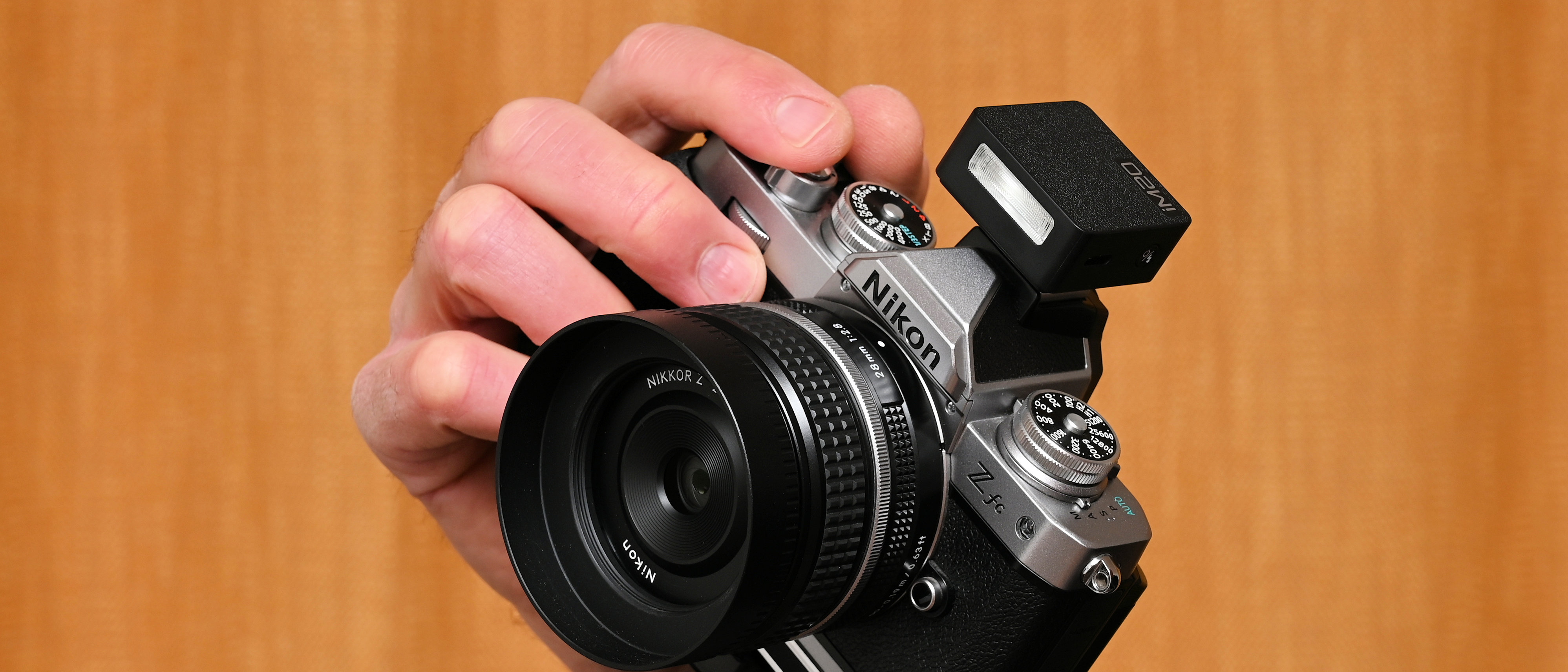The best monopods: stable support that can take a load off
For wildlife and sports photography, or anytime you’re using a big heavy lens, a monopod can give some much-needed relief
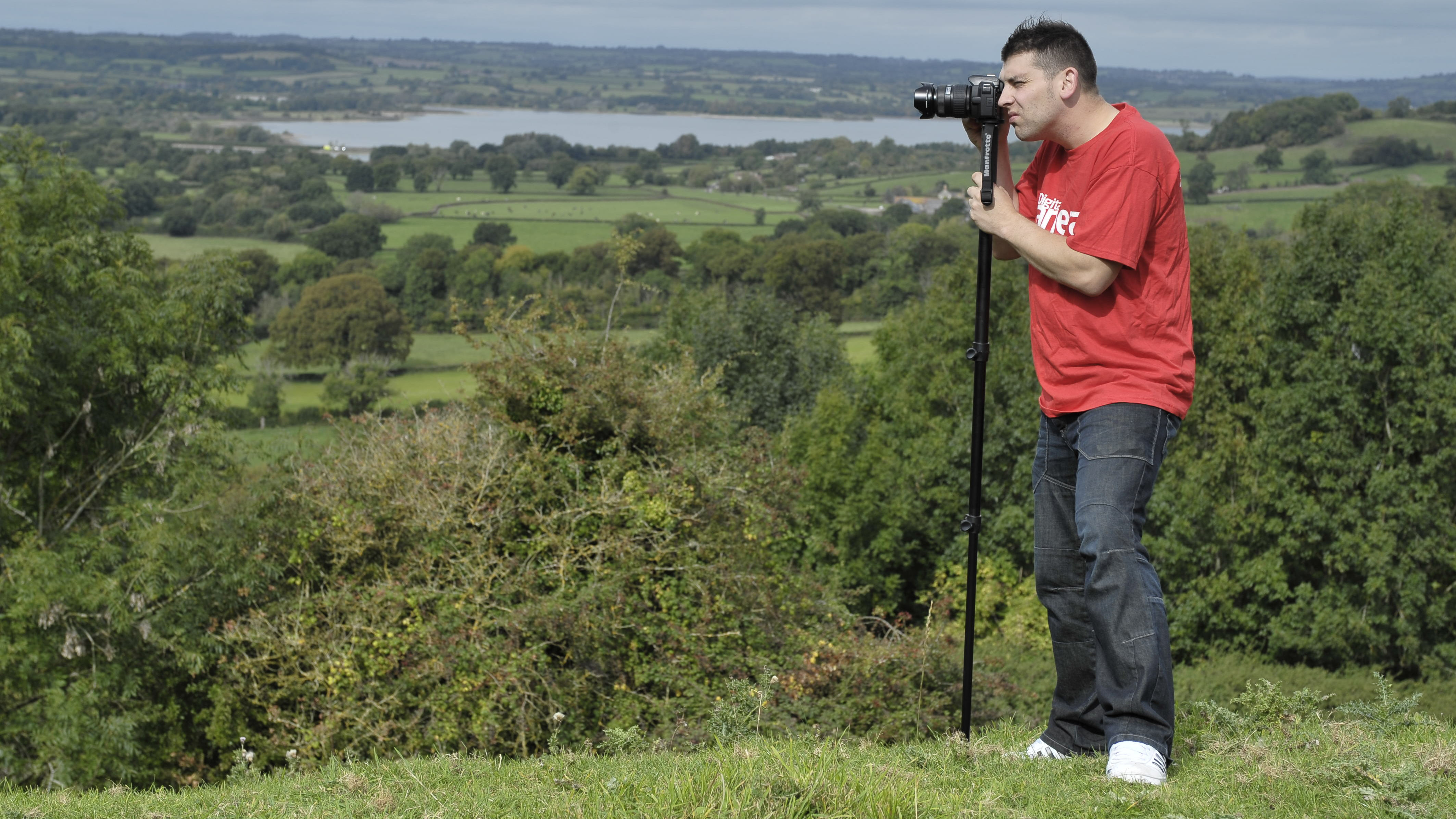
Image stabilization is a wonderful thing, whether it’s in-camera, in-lens, or both. I often find that I can get pin-sharp shots at slow shutter speeds, the kinds of which I could only dream of in bygone times. Another upside is that I much prefer the freedom of movement I can enjoy in handheld shooting, compared with using a tripod, and it’s also one less thing to carry. But that’s not the whole story, especially when I’m using a big, heavy telephoto lens for the likes of sports and wildlife photography.
A good monopod can literally take a load off, as far as I’m concerned. Especially for long periods of shooting, when I’m covering a sports event, a heavy camera and lens kit can be a real pain in the neck (and the back). It’s great to be able to transfer all of the weight to a monopod and let it take the strain. In the absence of stabilization, they can also cut camera-shake at slower shutter speeds in low light, and they're great for adding stability to video. But while a monopod might seem like a very simple device, there is a huge range of different options on the market with different advantages and drawbacks.
The quality of the build of monopods can vary greatly, as can their height, weight and maximum payload. Some monopods have more leg sections than others, some have stabilizing feet that can sometimes also be used as mini tripods, and some even double as video sliders or have their own leveling heads. For the following guide, I've picked out some of the best options to suit a range of needs and budgets but, if you still feel that three legs are better than one, make sure you also check out our guides to the best tripods and the best travel tripods.
The Quick List
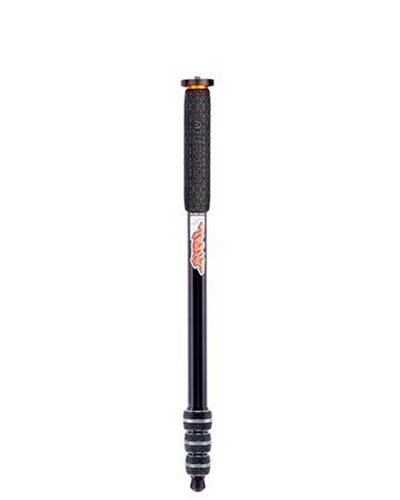
I love this strong but light, durable monopod with attachable feet and a pole that can extend to more than two meters for high-angle work.
Read more below ↓
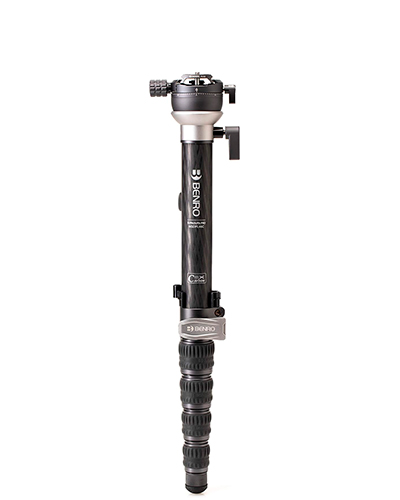
I thought I'd seen everything in monopod design but Benro managed to surprise me with a clever rotating foot for smooth panning, a leveling head and a flip catch for quick adjustments.
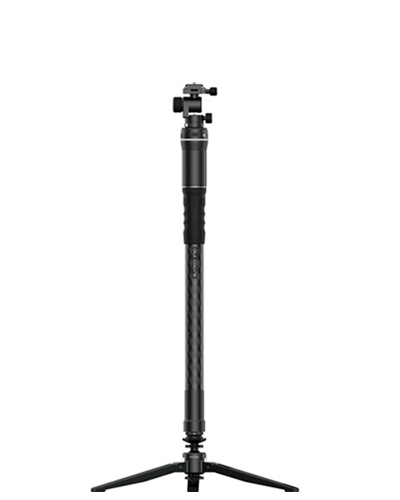
This is a versatile motorized tool for video with a pan and tilt head included. It can be used as a monopod or mounted on a tripod horizontally or at an angle or as a slider for smooth movement.
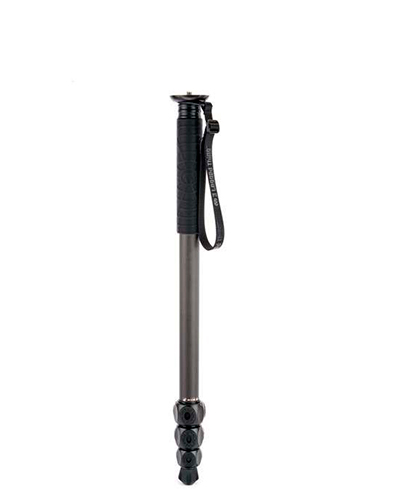
This sleek, high-quality monopod is my top pick for reaching high thanks to the faster four-section design, the light carbon fiber build and a max height of over 2m / 6.5ft.
Read more below ↓
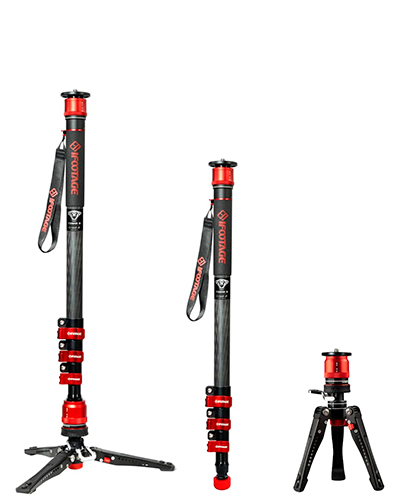
Various monopods offer bases for stability, but the iFootage Cobra 3 is the most innovative that I've tested. The feet can serve as a mini tripod on their own, and the pedal lock is super handy.
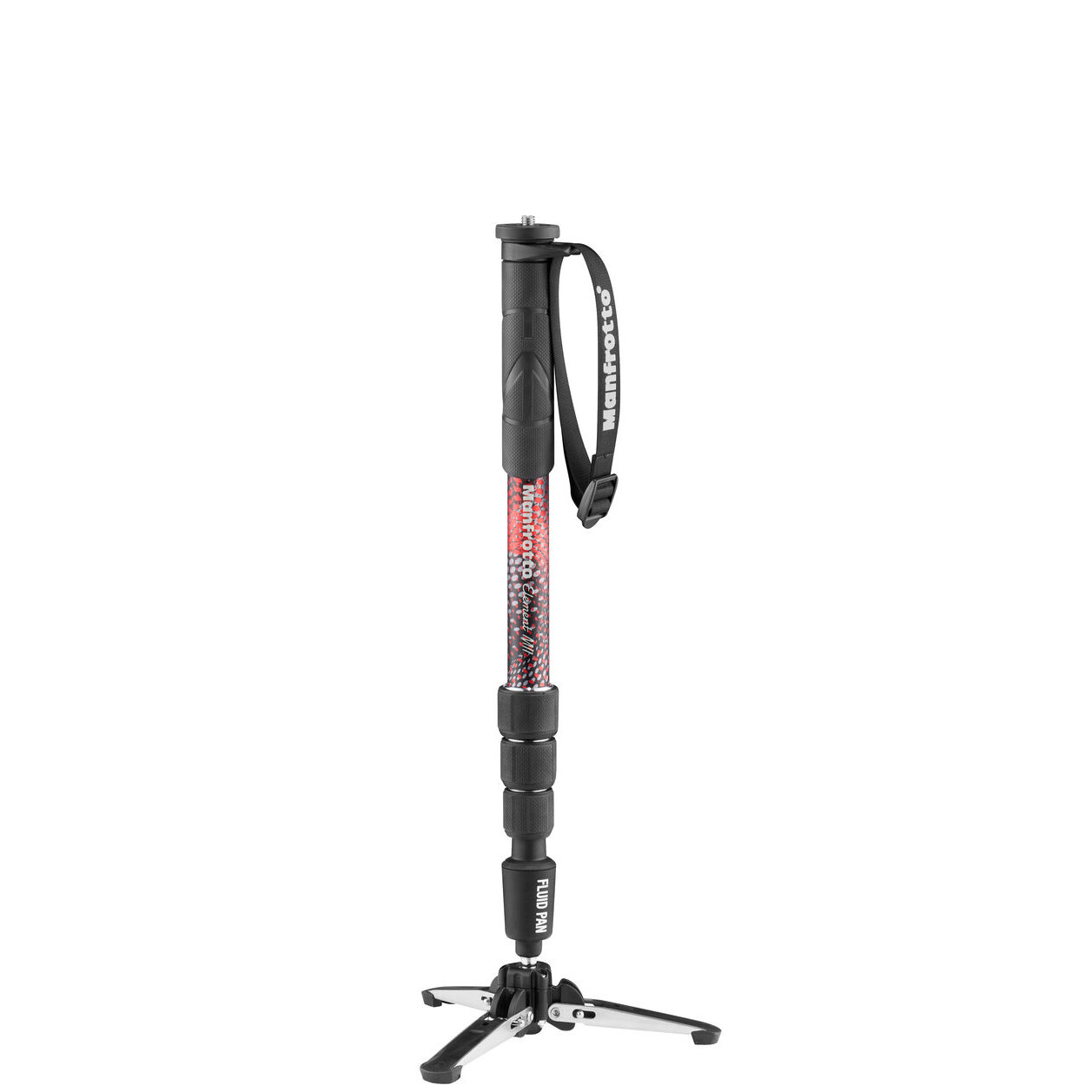
Athough it has a prestigious name, this Manfrotto monopod is relatively inexpensive to buy and is a real lightweight at just 0.5kg, making it one for the journey.
The best monopods
Why you can trust Digital Camera World
The best monopod overall
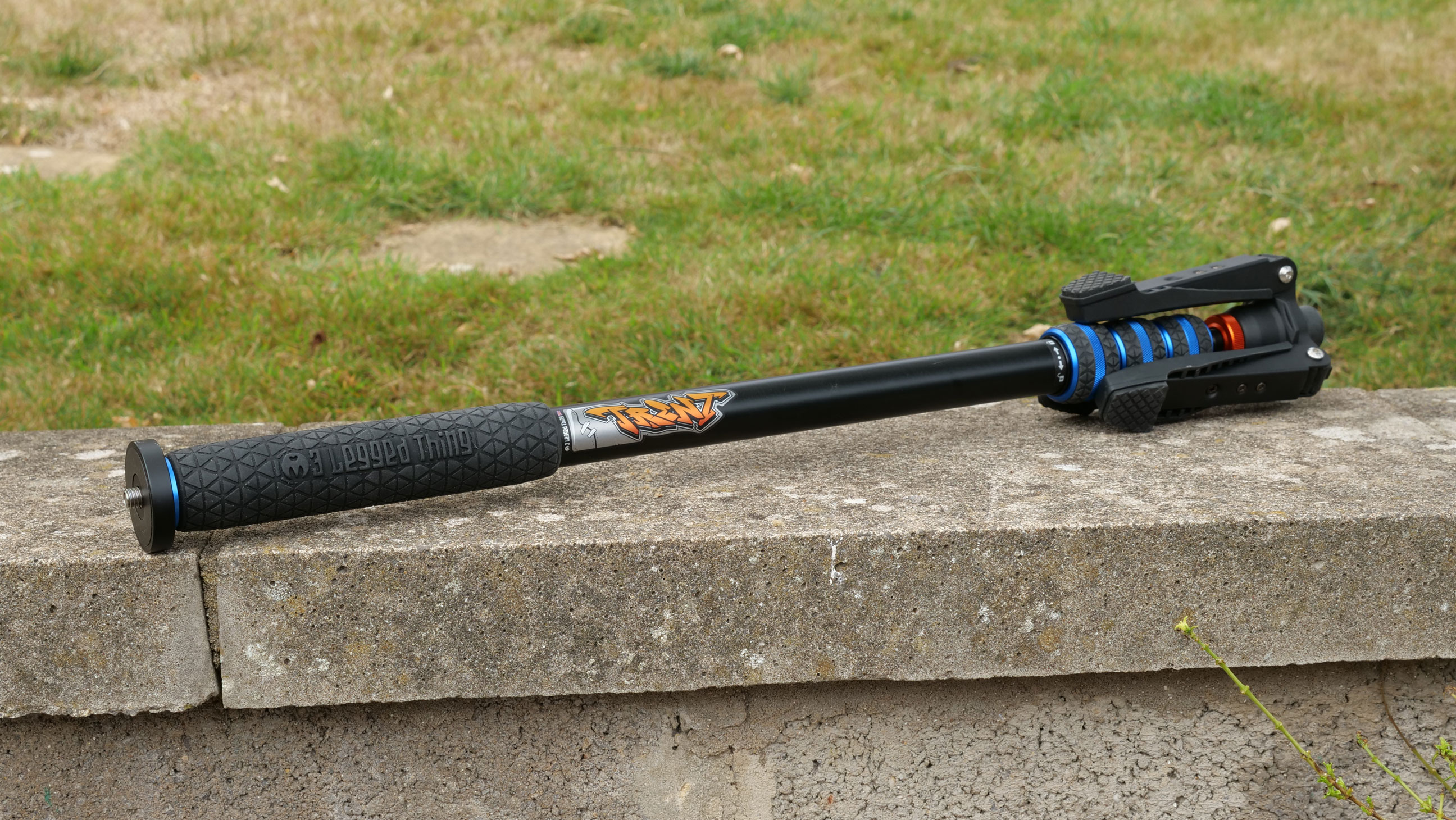
Specifications
Reasons to buy
Reasons to avoid
3 Legged Thing is a reliable British brand for tripods and monopods, and I've tested lots of their products over the years. The redesigned Trent 2.0 stands out for its impressive max load-to-weight ratio, able to support up to a hefty 30kg of kit. It can also reach very high, up to over two meters, all while being relatively light as well as more affordable than some of the brand's more premium options.
It features redesigned leg locks, which I found easy to operate even in the cold when wearing gloves. And there's the option to include 3 Legged Thing's Docz2 foot attachment, which adds extra stability and allows you to use the monopod hands-free (don't go too far!). The feet can be attached and removed, but that involves screwing them on or off.
The Trent 2.0 still measures a pretty chunky 60cm when packed down (an unavoidable trade-off for all that height). It also lacks a quick-release plate or head, so you'll need to have one already or buy one separately if you want to avoid having to screw the monopod to your camera every time you use it. If you don't mind those frustrations, I think this is a fantastic value for big setups.
Read our full 3 Legged Thing Punks Trent 2.0 review
The best monopod for innovative design

Specifications
Reasons to buy
Reasons to avoid
Just when I think I've seen everything in monopod design, Benro comes along and surprises me with the Benro SupaDupa Pro MSDPL46C, which proves there's still innovation to be found. It's a clever monopod design with a few interesting tweaks that I really appreciated when I tested it.
First, there's a clever rotating foot that I found makes it easier to produce smooth panning movements without the heavy and expensive addition of a video head. Second, there's an inbuilt leveling head that offers 20-degree movement in all directions. Like the first feature, it doesn't offer the range and fluidity of a pan and tilt head, but I found it can be useful in certain situations, For example, you could lean the monopod up against a wall or railing to keep it steady and adjust the leveling head to set the camera straight.
Finally, the leg locks are all twist-style except for the top one, which is a flip catch. This makes it very easy to use the top section for quick height adjustments. All of these features make this a relatively expensive monopod and it's probably more than most monopod users need, but these touches could make the difference, particularly for sports photographers who don't want the expense and weight of an additional head.
Read our full Benro SupaDupa Pro MSDPL46C review
The most versatile monopod
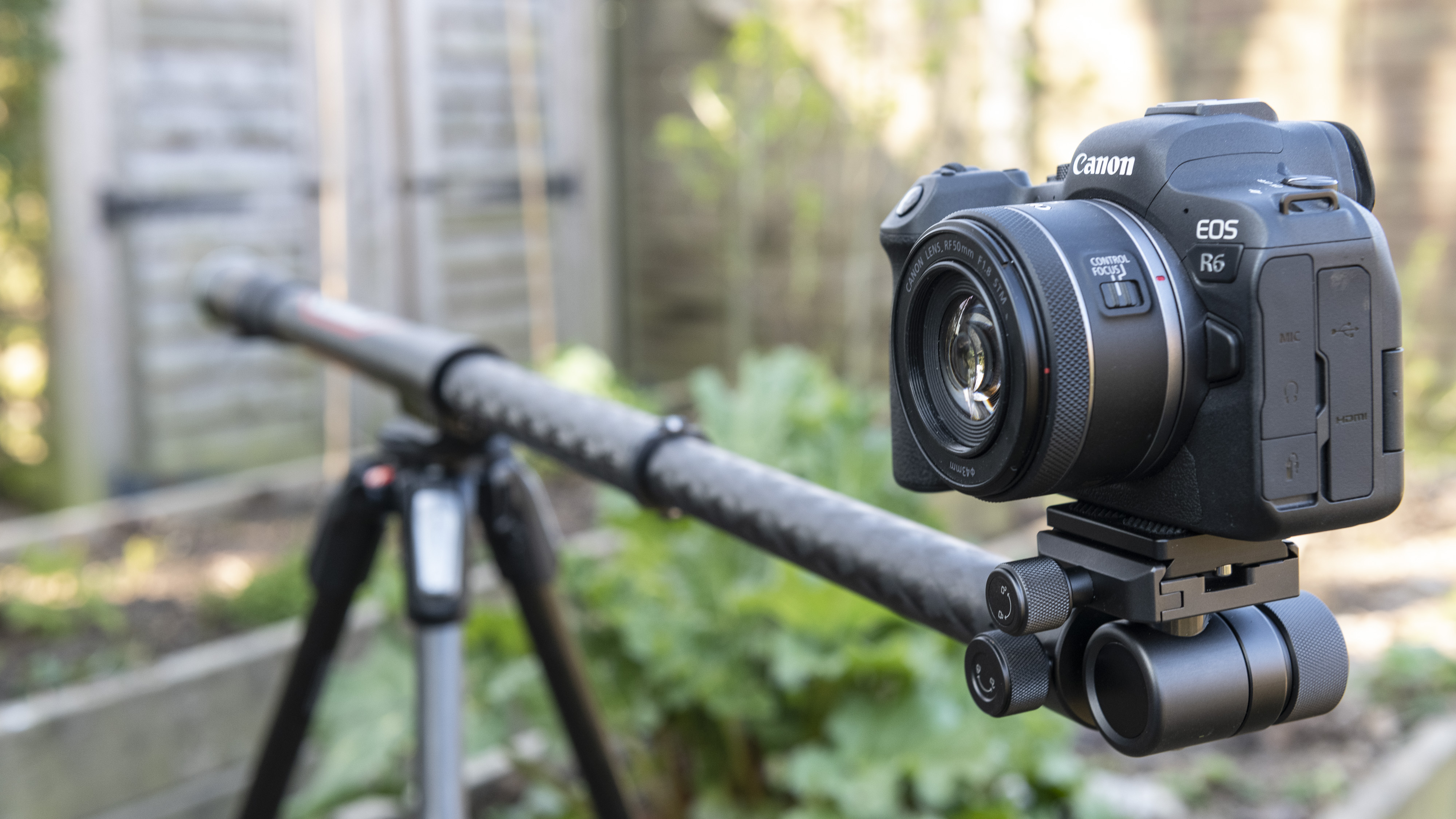
Specifications
Reasons to buy
Reasons to avoid
Moza's original Slypod was an innovative 2-in-1 slider-come-monopod: a clever motorized device that could automatically extend at different speeds via a dedicated mobile app. Its big brother Slypod Pro is an evolution of the same concept, with more power and a set of detachable feet.
It's mainly aimed at videographers, and most of the versatility is more beneficial for video than stills. When I tested it, I found the addition of the feet, larger than many such detachable bases, to be a welcome addition for allowing me to use the device vertically hands-free. Using the motor in the vertical position, I was able to create smooth vertical tracking shots.
Meanwhile, fitted to a regular tripod, the monopod becomes a horizontal or angled slider or boom. Both in this position or vertically, it can automatically extend a total length of 1.46m. I found that the app works well, allowing us to regulate the extension speed between 0.5mm/s and 40mm/s to create different looks.
Unsurprisingly given that it includes a motor, this monopod is far more expensive than most. It's also fairly heavy and measures 65cm when collapsed (without the tripod attachment). But while the motor is of limited use for photography, I found that it comes into its own as a slider or jib arm for shooting video.
Read our full MOZA Slypod Pro review
The best tall monopod
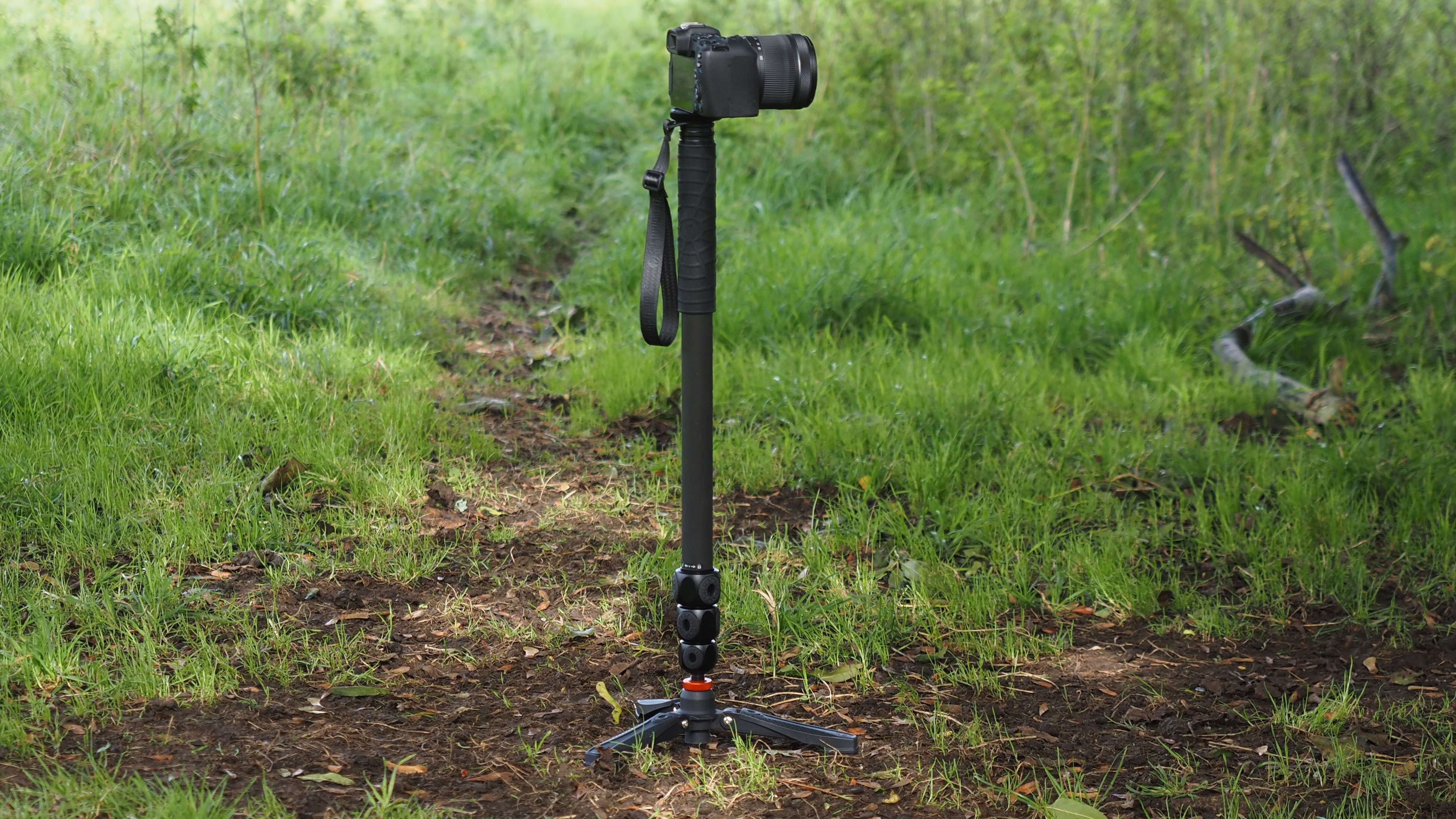
Specifications
Reasons to buy
Reasons to avoid
I think this is the best monopod overall if you need a lot of height. A fast four-section design makes it quick to extend, and the lightness and rigidity of carbon fiber helps keep weight down while giving over 2m / 6.5ft of reach.
That level of extension might be more than what most people need to bring their viewfinder to eye level, but it can be useful in various scenarios, including situations where you want to shoot downward, over people's heads, or if you're on a hill or steps and the base of the monopod is lower than your feet.
When I tested it at its full extension, I felt reassured by the solidity of the build. The thick rubber grip feels secure and comfortable to hold, and the wrist strap provides extra security, and I liked the grips on the ‘O-Pad’ twist locks on the leg sections to aid purchase for tightening and loosening.
There's an option to include the brand's Docz2 feet for extra stability, but, alas, no head is included. The Lance doesn't pack down small, so you'll need to strap it to a backpack to carry it. Also, due to the carbon fiber body, it is more expensive than 3 Legged Thing’s magnesium alloy monopods. If convenience and keeping weight down are priorities, it's a great buy.
Read our full 3 Legged Thing Lance review
The best monopod for feet
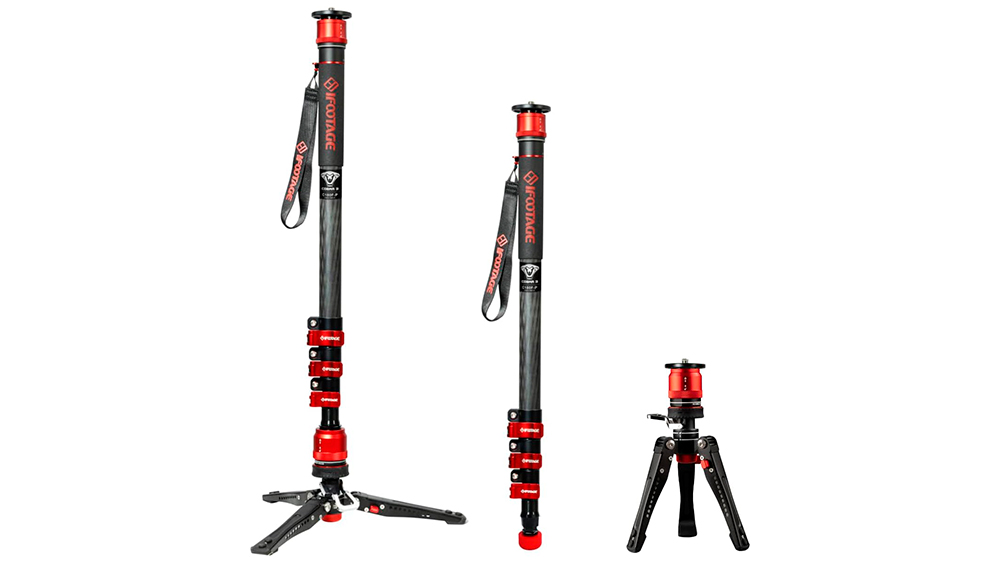
5. iFootage Cobra 3
Specifications
Reasons to buy
Reasons to avoid
Several monopods come with bases either included or as optional extras, but iFootage continues to lead the way in this aspect. I'm still a big fan of this monopod's predecessor, the Cobra 2, and all because of the feet; they attach via a quick-release mechanism rather than a screw, so you can fit the quick-release plate directly to the feet as well as to the monopod itself. And the feet fix at three different levels, which makes them really very useful on their own as a mini-tripod for low-level shooting.
The new version maintains all this but adds a couple of well-considered improvements. The feet are longer, and there's a new pedal lock mechanism, which makes it quick and easy to switch between locking the monopod in place or letting it move freely. As with most monopods sporting feet, you don't want to take your hands off your gear for very long. They'll often stay put if you're not shooting with anything heavier than a standard zoom, but it's a nerve-wracking experience. One relatively mild gust of wind or accidental nudge and it's game over. But I found that with its larger feet, the Cobra 3 can stay upright much more convincingly.
It's still not going to replace a tripod for very long exposures due to the slight wobble caused by the feet being so low, but it does allow the shutter speed to be slowed down, and I've found that it can even do the job for timelapses.
Whether you go for the lighter, more expensive carbon fiber or the aluminum opinion, these are among the pricier monopods around. The weight and size are also drawbacks. Oh, and for some reason the manufacturer feels the need to plaster its logo over absolutely every surface, making it look pretty garish, but I can overlook that for the practicality of it. The simple inclusion of a protective tip to put on the bottom of the monopod to turn it into a walking pole is a nice touch for hiking trips.
The best budget compact monopod
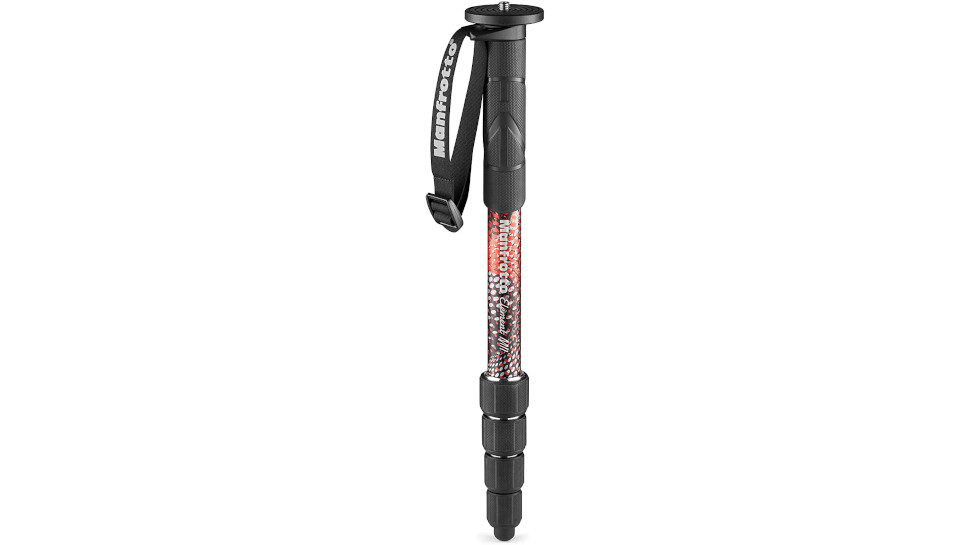
6. Manfrotto Element MII
Specifications
Reasons to buy
Reasons to avoid
Part of a relatively new range from Manfrotto, the Element MII monopod is a winner in two key areas: it's lightweight and it's affordable. And it really sees off the competition for these factors. It weighs just 0.5kg and can still hold up to 8kg of kit. Best of all, it folds down to just 43cm, so it should fit in most carry-ons and backpacks.
This all makes the Manfrotto Element MII a great option for the roaming photographer or videographer. It's a simple monopod. There's no tri-part foot or quick-release plate. And to produce an aluminum monopod with such a light weight, it inevitably feels less solid than other options, as well as being a little short for some people or for some high-angle shots. However, the price is tough to argue with, and if you need a monopod from a reliable brand that you know will be a good product, this is the cheapest monopod that I can recommend.
How to choose the best monopod for you
Buying a monopod doesn't have to be too complicated – fundamentally, all you're dealing with is a single-leg support for your camera – but there are a few things worth looking out for. It's worth thinking about the type of shooting you're doing and what you might prioritize based on that. Is it more important to you that a monopod is quick to set up or light to carry?
A monopod must be able to support the combined weight of your camera/lens/accessories setup, so the best monopod for you will depend on your kit. If you're using a lightweight mirrorless camera and a small lens, this will be a pretty different proposition than if you're using a hefty DSLR with a super-telephoto lens.
You also need to consider how high you need your monopod to go. This will depend on several factors, not least of which is how tall you are yourself. Monopods that reach greater heights are useful for high-angle work, but they're more expensive. If you're short in stature and you don't plan to take shots from high angles, you could save money by picking up a monopod that doesn't extend so far.
Also consider the practicality of each monopod's design. Monopod leg sections will be separated with twist- or flip-style locks. Twist-locks tend to be more secure, but flip-locks are faster. Tripod users tend to prefer more secure locks, but for a monopod, you may be better off with something that can be deployed faster in order to take advantage of the monopod's greater shooting versatility.
Monopod feet
Some monopods also have additional flip-out feet for more stable support. In some cases, these are fixed and in others, the feet form a detachable base that can also be used as a handy mini tripod. Other types of bases include a fixed rounded foot.
Monopod head
Like tripods, monopods can be fitted with different heads to allow panning and tilting, but in most cases, you will need to buy this separately. Most monopods have a standard 3/8 screw, which will allow you to attach most tripod heads, but it's always worth checking. See our pick of the best ball heads for options to accompany a tripod or monopod.
Monopod grips
Finally, at the top of the monopod, there should be a grip. As the monopod won't stand up on its own without your assistance, it's important that you're able to keep a secure grip on it, so this is something worth paying attention to. On cheaper monopods, the grip is likely to be foam, while some more expensive models use textured rubber.
Model variations
Be aware that many monopod brands make several variations of the same model, which sometimes have the same name but a different product code. For example, they may have a carbon fiber version and an aluminum version, or combination products that add in feet and/or a tripod head. On some retail websites such as Amazon, these variations often appear as different options under the same listing so always be sure to check you are buying the version that you want.
How I tested the best monopods
I have made this selection of the best monopods based on our reviews of each monopod and real-life testing in field. To begin with, I set certain criteria as a minimum, choosing monopods capable of supporting the weight of a full-frame camera and lens combination. I also ensured the monopods were compatible with most tripod heads.
I then evaluated each monopod's strength, build, design, portability (weight and compactness), how quick and easy it was to set up, and useful features. Finally, I picked out the best monopod for different needs, considering more affordable options for those on a budget and more versatile options for content creators.
FAQs
Why would you use a monopod?
A tripod provides more stability, so why choose a monopod? Well, a tripod can be bulky and awkward to set up, while a monopod – though requiring a hand to steady it – is much quicker and easier to deploy. If you're rapidly changing positions, or in an awkward space on uneven ground, it can be a lifesaver, and, since they only have one leg rather than three, they tend to be lighter and more compact, which makes them much easier to travel with.
With telescopic sections to fold up when not in use, a monopod can be dangled from a bag or even a wrist when not in use and then deployed at a moment's notice. Some can even be converted for use as a walking pole.
The downside is that even those monopods that have foot stabilizers probably won't provide enough stability for super-long exposures, especially if there's any wind, but they can be very useful for giving yourself a little wiggle room with shutter speeds at a moment's notice, and they also can take some of the muscle work out of working with long lenses for things like wildlife and sports photography. Having a tool to take some of that weight can be very welcome during long sessions.
What is the best material for a monopod?
Most monopods are made from either aluminium or carbon fiber and both of these have their advantages and disadvantages. Carbon fiber monopods are notably lighter, but they are more expensive. Aluminum monopods are strong and more affordable, but they weigh more and they can get very cold in low temperatures, making them difficult to handle. There is often a misconception that carbon fiber monopods are stronger than aluminium ones. This is because carbon fiber is stronger than aluminium at the same weight, but this characteristic of the material is used to allow monopods to be made lighter.
Get the Digital Camera World Newsletter
The best camera deals, reviews, product advice, and unmissable photography news, direct to your inbox!
Matthew Richards is a photographer and journalist who has spent years using and reviewing all manner of photo gear. He is Digital Camera World's principal lens reviewer – and has tested more primes and zooms than most people have had hot dinners!
His expertise with equipment doesn’t end there, though. He is also an encyclopedia when it comes to all manner of cameras, camera holsters and bags, flashguns, tripods and heads, printers, papers and inks, and just about anything imaging-related.
In an earlier life he was a broadcast engineer at the BBC, as well as a former editor of PC Guide.
- Rod LawtonContributor
- Adam WaringGuides Editor

